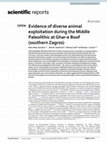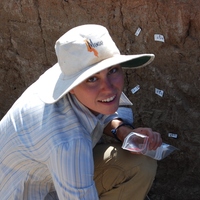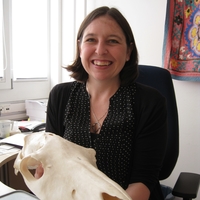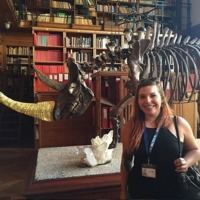Papers by Mario Mata González

Although Middle Paleolithic (MP) hominin diets consisted mainly of ungulates, increasing evidence... more Although Middle Paleolithic (MP) hominin diets consisted mainly of ungulates, increasing evidence demonstrates that hominins at least occasionally consumed tortoises, birds, leporids, fish, and carnivores. Until now, the MP zooarchaeological record in the Zagros Mountains has been almost exclusively restricted to ungulates. The narrow range of hominin prey may reflect socioeconomic decisions and/or environmental constraints, but could also result from a research bias favoring the study of large prey, since archaeologists have undertaken no systematic taphonomic analyses of small game or carnivores in the region. Here, we report on the first comprehensive taphonomic analysis of an MP faunal assemblage from Ghar-e Boof (∼ 81-45 kyr), a Late Pleistocene site in the southern Zagros of Iran. Anthropogenic bone surface modifications point to hominins as the main agent of accumulation. Hominins preyed primarily on ungulates, particularly wild goat. However, we also found evidence for MP hominin exploitation of carnivores and tortoises at the site. Although small game represents only a minor portion of the diet, our results suggest that the hunting behavior of MP hominins in the Zagros was more diverse than previously thought, similar to what we find elsewhere in Eurasia.

Scientific Reports
Although Middle Paleolithic (MP) hominin diets consisted mainly of ungulates, increasing evidence... more Although Middle Paleolithic (MP) hominin diets consisted mainly of ungulates, increasing evidence demonstrates that hominins at least occasionally consumed tortoises, birds, leporids, fish, and carnivores. Until now, the MP zooarchaeological record in the Zagros Mountains has been almost exclusively restricted to ungulates. The narrow range of hominin prey may reflect socioeconomic decisions and/or environmental constraints, but could also result from a research bias favoring the study of large prey, since archaeologists have undertaken no systematic taphonomic analyses of small game or carnivores in the region. Here, we report on the first comprehensive taphonomic analysis of an MP faunal assemblage from Ghar-e Boof (∼ 81–45 kyr), a Late Pleistocene site in the southern Zagros of Iran. Anthropogenic bone surface modifications point to hominins as the main agent of accumulation. Hominins preyed primarily on ungulates, particularly wild goat. However, we also found evidence for MP ho...

Archaeological and Anthropological Sciences
The Zagros Mountains represent a strategic geographic region near the junction of Africa, Europe,... more The Zagros Mountains represent a strategic geographic region near the junction of Africa, Europe, and Asia, and valleys within the mountain range likely correspond to migration corridors used by archaic and modern humans. Ghar-e Boof, a key archeological site in the southern Zagros, is located at an altitude of 905 m.a.s.l. in the Dasht-e Rostam region of the Fars Province, Iran. On the basis of lithic artifacts and radiocarbon and luminescence dating, the Late Pleistocene archeological record of the site spans from the Middle Paleolithic (MP) to the Late Epipaleolithic. Ghar-e Boof includes find horizons of the early Upper Paleolithic (UP) Rostamian dating to 42–35 ka cal. BP. These Rostamian-UP assemblages are typically attributed to modern humans. The high-resolution stratigraphy and microvertebrate record offer a unique opportunity for reconstructing the paleoenvironment of the southern part of the Zagros Mountains during the Late Pleistocene and contribute to a better understan...
Evolutionary Anthropology: Issues, News, and Reviews
Quaternary Science Reviews











Uploads
Papers by Mario Mata González